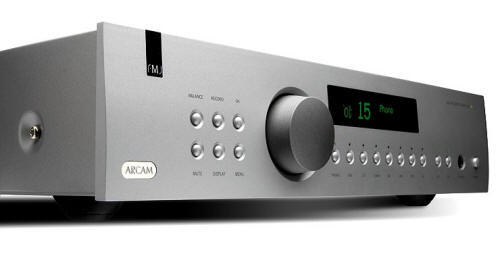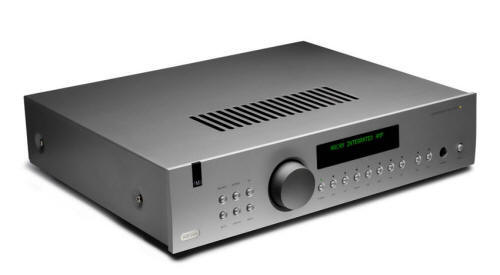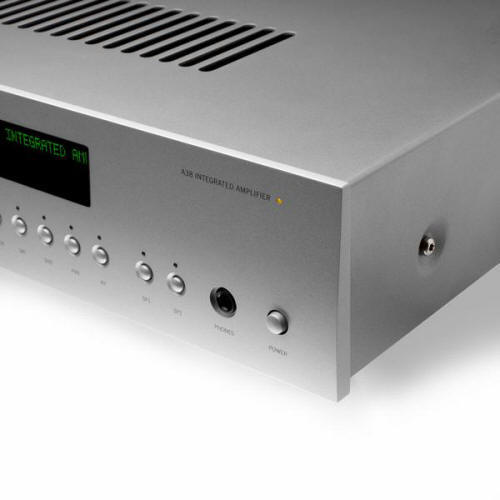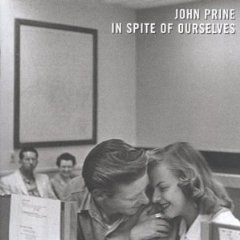
You are reading the older HTML site
Positive Feedback ISSUE
41january/february 2009
arcam
FMJ A-38 integrated amplifier
as reviewed by Jeff Parks

|
JEFF PARK'S SYSTEM
LOUDSPEAKERS
ELECTRONICS
SOURCES
CABLES
ACCESSORIES
|
As many of you may already know I am fan of Arcam products. Who wouldn't be a fan of Arcam's FMJ products with a solid history as being one of the more natural and musical sounding products offered in affordable high end audio? I think of Arcam as high end sound at real world pricing. This translates for most of us audiophile mortals who have kids to raise and wives to keep happy, that purchasing Arcam's products won't take a big dent in one's audio budget. It is refreshing to know purchasing an Arcam product will provide that "high-end" sound we all long for while still leaving money left over in our bank accounts. To me, that is truly "affordable" hi-f!
After completing a couple of reviews regarding Arcam's digital products, the Diva CD-192 (Issue 17) and the FMJ CD-36 (Issue 32) it is time to take a peek at one of their other products within the Full Metal Jacket (FMJ) line. The Arcam FMJ A38 integrated amplifier, rated at 100 watts per channel. One of the first things I noticed as I opened the box was the look of the A38 with its usual pragmatic appearance, while at the same time displaying an understated utilitarian elegance that is in my opinion very easy on the eyes. Another plus for the A-38 is that it is a perfect match to the Arcam CD-36, or CD-37 (review pending) or any other Arcam FMJ product for that matter. So, for those of us who are into aesthetics, which I am, the FMJ line with its Art Deco understated looks is both timeless and classy—something any audiophile would be proud to display in their two channel or home theater (HT) system.
Look Ma at all of these features
Like many integrated amplifiers the Arcam A-38 is loaded with features. Here are some of the highlights: For starters, the A38 has the ability to turn off the display while still in use. Why is that cool? Now you can listen to your rig in complete darkness if you chose to do so. This allows the auditory cues of the music to paint the visual picture along with your imagination in order to take you away from the reminders of your earthly life and responsibilities. Another cool feature is the A38's ability to disable the preamplifier section if one chooses to do so, thus, utilizing only the A38's internal amplifiers. I see this useful for someone using the A-38 in a HT system where multi-amplification is required. Bypassing the preamp allows the end user to access the HT processor of their choice while at the same time saving some money by using the A38's internal amplifiers as a starting point for such a system. In short, the A-38 can serve as the heart of a modest audiophile system or the beginning of a more complex bi-amped or multi-amplifier HT system. Another highlight regarding the Arcam A38 is the ability to add an Arcam internal phono card (retail: $199) which can run MC or MM type cartridges. This is cool for those of us who are on the fence regarding the use of a turntable. The big plus here is if you don't need a phono stage at the point of purchase buy the A38 without one and add a phono stage later as the need arises. That is good thinking on Arcam's part, since many integrated amplifiers don't allow that option, thus, requiring the need for an external phono stage, of which many of us may or may not have the shelf space to accommodate.

The last feature I would like to highlight which as a parent of a toddler and a 10-month-old I certainly can appreciate, a headphone jack. Coincidentally, the other day I was auditioning headphones in a friend's audio store. Being a parent I am now beginning to see the true advantage of using headphones as another resource in order to listen to my rig—especially when the kids are asleep. As all of you who have kids know, we look forward to the time between 8:00 and 10:00PM. That is the time that belongs to the parent, or so we hope. Nothing is worse than waking up a cranky child after they have fallen asleep for a bit. Hence, the reason as to why I am now in the market for headphones. Bearing this in mind, having a head phone jack just may close the deal for many audiophiles.
Other features of the A-38 are:
-
Ultra Stable thermal management though the use of limiting thermal modulation. Heat has always been the bane of electronics; Arcam goes through great lengths to keep the A-38 running cool even during time is heavy use.
-
Hermetically sealed reed relay input switching which results in keeping dust out and low contact resistance, thus, extending a life span measured in decades as opposed to years.
-
"Mask of Silence & Stealth Mat EMC damping results in keeping background blacker thus allowing to music to come out more into the foreground.
-
SDS Damped Chassis thus keeping resonance at a minimum.
-
Use of a massive toroidal based power supply.
-
Circuits are constructed on a multi-layer PCBS all for idea component placement and best sonic delivery.
-
CR 90 remote which is one of the best learning remotes out there in my opinion.
-
Menu driven advanced control system.
-
Inputs for seven sources all RCA no XLR.
-
Two outputs for amplification.
-
Ultra wide power band.
-
Studio grade volume control that moves the volume in .5dB increments.
-
Two sets of switched speakers.
-
2 Tape loops for those with a CDR.
-
15 amp IEC connector with detachable cord.
All in all the A38 offers a pretty complete package. To round things out, the A38 offers 100-watts per channel, has the ability to shut off all displays, provides an optional phono stage, has plenty of inputs and outputs to satisfy most end users, and the ability serve one or two pairs of speakers ranging from 4-16 Ohms, coupled with technical design features to satisfy even the most discriminating audiophile at the real world price of $2295 US. I don't know about you, but I don't feel the A38 is lacking anything—except maybe an XLR input and output to clearly complete the package.

It's all about the juice.
After a long break-in period of 200 hours, I sat down to listen to the A38. In my notes at the time I wrote: The A38 is very sweet sounding and does not offend. Bass is there, but not to the last bit of depth or impact. Midrange is a bit recessed though clear and articulate. Highs are there however not to that last bit of extension." Overall the A38 provided a nice presentation. Still, at first, I just wasn't that impressed. For me, this was a dilemma since I have always been impressed with Arcam's gear. At that point there were all kinds of questions running though my mind, for example, maybe Arcam makes outstanding CD players and so-so, amplifiers within its FMJ line? Well this wouldn't do. I was perplexed. I swapped out all of my existing power cords to the new Audience PowerChord-e (review to follow soon) throughout my entire system—including line conditioner. That changed everything! The improvement in sound was not just a little bit of gain as is often case when we tweak out our systems—it was dramatic!
So, how does the A38 sound with the new power cord? The first thing I noticed was the extended headroom regarding the amplifier's ability to communicate both micro and macro dynamics which seemed to have exploded exponentially. The best way I could describe what I was hearing was it was like the A38 was suffering from a head cold. It had the ability to do all things right, but it sounded bogged down. Hence, the reason I looked at my power cord as the likely source of my problem. Now with the new power cord in place the problem was solved. I ready to once again re-evaluate the A38.

Now we are off to the races.
One of the attributes that make the A38 such a great integrated amplifier is the A38 never overdoes anything. With the power cord changes in place there was a deep and tight bottom end without being overdone, an excellent midrange that now came out of the background, and a high end that was complete without sounding bright or strident. Maybe that is why I am a "tube guy." Being a "tube guy" I am willing (if necessary) to lose a little bass punch and high end extension in order to get the music right. I will always give up something on the extremes as long as the gear gets the musical performance right—something that is now called musicality. In short, musicality as defined by this reviewer as getting the performance right as it was originally recorded, and staying true to the original sound of each instrument and vocalist within each recorded performance.

Another audiophile attribute that the A38 gets right is its ability to separate the instruments throughout a large and deep soundstage while maintaining clarity and rhythmic pacing of the music. Take Ben Harper, for example from his Fight for Your Mind [Virgin Records America 7243 8 48701 2 6] recording, one of my favorite CDs. There are two tracks that stand out to me--that being Track 4 "Please me like you want to" and Track 5 "Gold to me." What I love about both of these songs besides the music is the way Ben Harper presents the performers into the soundscape one at a time. As the musical passage gets more complete and complex each performer takes their rightful place within the large and very believable soundstage. It is during this time that the A38 is at is best where it places each instrument layer with precision while at the same time maintaining a clarity and pacing about it that is uncanny for any amplifier in this price range.

Another example of above is from the John Prine CD In Spite of Ourselves [Oh Boy Records OBR-019] presenting a series of duets from various artists including: Trisha Yearwood, Emmylou Harris, Iris DeMent, and Lucinda Williams to name a few. Again the A38 gets the entire CD right by nailing the pacing, timing, and intimacy of each piece right without destroying the whole point of the duet, almost always lost love and opportunity. One of my favorite tracks is "In Spite of Ourselves." This song was originally written for the end credits of the movie Daddy and Them. The A38 does such a great job of reproducing this recording with its clarity, intimacy, and rhythmic pacing that you truly believe John Prine and Iris DeMent clearly have a connection here as they exemplify the true love these two characters have for one another.

While pacing and rhythmic timing are important to music reproduction, that means nothing if you can not capture micro and macrodynamic with equal aplomb. Again the A38 does not disappoint. When listening to the album Give from the band The Bad Plus [Sony Music Japan International Inc. SICP 534], the A38 captures the essence of the performance with its heavy bass lines while at the same time reproducing the mircodymamics of the cymbals, the strings on the bass vibrating, and the upper octaves of the piano with such realism you'd swear they are right in the room with you. Again, each performer and their instrument have their rightful place along a soundstage that is deep and wide extending well beyond that of the speakers. These experiences happen time and time again with each recording I threw at the A38. Again, maintaining my original premise that A38 is truly special.
Faults? None that I can hear. However, if I were splitting hairs the only fault I can see is for those who value bass depth and high frequency extension as an absolute. Remember, the A38 favors musicality over that last bit of resolution. Is that a fault? Absolutely not! In my opinion the A38 has to be one of the more musically engaging integrated amplifiers I have ever heard. The A38 gets the musical message right by hanging on to the overtones of music up to the point that in my opinion separates the posers from the performers. Meaning, if you are looking for an integrated amplifier where you listen to the music as opposed to "hearing the gear" (you all know what I mean), this is the integrated amplifier for you.
The FMJ line - a true classic?
As we all know being the last word in high end frequency reproduction and bass extension at the cost of musicality may be impressive at first, but in the end it will lose its favor. Case in point 30 years ago I used to sell Tandberg products during the era of the great receivers that being the Tandberg TR-2075MKII and later the TR-2080. In all the years selling Tandberg (1977-82) not once did a customer EVER return their receiver. On the other hand, we sure did take in a lot of trades from Yamaha, Marantz, Pioneer and Optonica (Sharp's high end line) to name a few. Hell, every once in a while a customer would trade in a Luxman receiver—Tandberg's biggest competitor regarding sound quality.
In the end, Tandberg always came out the winner in the receiver wars of the 1970's. Though maybe not in total sales, Tandberg was the clear winner as far as staying true to the music. Maybe that is why Tandberg receivers are clearly sought out even to this day long after the Tandberg we remember is gone from the audiophile world? Why the popularity even to this day? The reason for this is, Tangberg receivers always had a natural, balanced and musical sound to it—something the other receivers of the day tried to accomplish but never really achieved. In addition, Tandberg was always populated with great internal parts, and always focused upon the sound as opposed to how it specs out
As many of you know Stereo Review promoted the objective in their reviews meaning it is how a product specs out that is the real tell tale sign as to how the product is going to perform. It wasn't until the magazines like Stereophile and The Absolute Sound differed from that philosophy and focused upon what really matters—that being how a piece of gear truly sounds to the human ear. I believe Arcam in its own way personifies today what Tandberg did so well in the past. Arcam focuses upon how gear sounds, not its specs or an impressive list of gee whiz features. In the end, it all boils down to how a piece of gears reproduces the original recording, end of story. Based upon Arcam's timeless sound, I do believe the FMJ line has the making of being one of those classic audio products.
The Final Word.
Now that my review period is over, I am sad to see the Arcam FMJ A38 leave my system. I have thoroughly enjoyed my time with the A38. What I enjoyed the most while listening to the A38 was during those times when I would take my reviewer hat off for a bit, and just listen to the music. The A38 clearly delivers beautiful music! My only qualm, be sure to play around with power cords when installing the A38 in your rig. That made all of difference in my case between an amplifier that sounded fine but with limits, to an amplifier that was a pure joy to listen to. Based upon the above mentioned comments, I clearly recommend the Arcam FMJ A38 to anyone. It's going to be a classic—trust me! Jeff Parks
FMJ A-38 integrated amplifier
Retail: $2195 plus $199 for the phono module.
American Audio & Video
153 Willow Drive
Plattsburgh, New York
(866) 916 4667
web address:
http://www.americanaudiovideo.com
email address:
[email protected]

